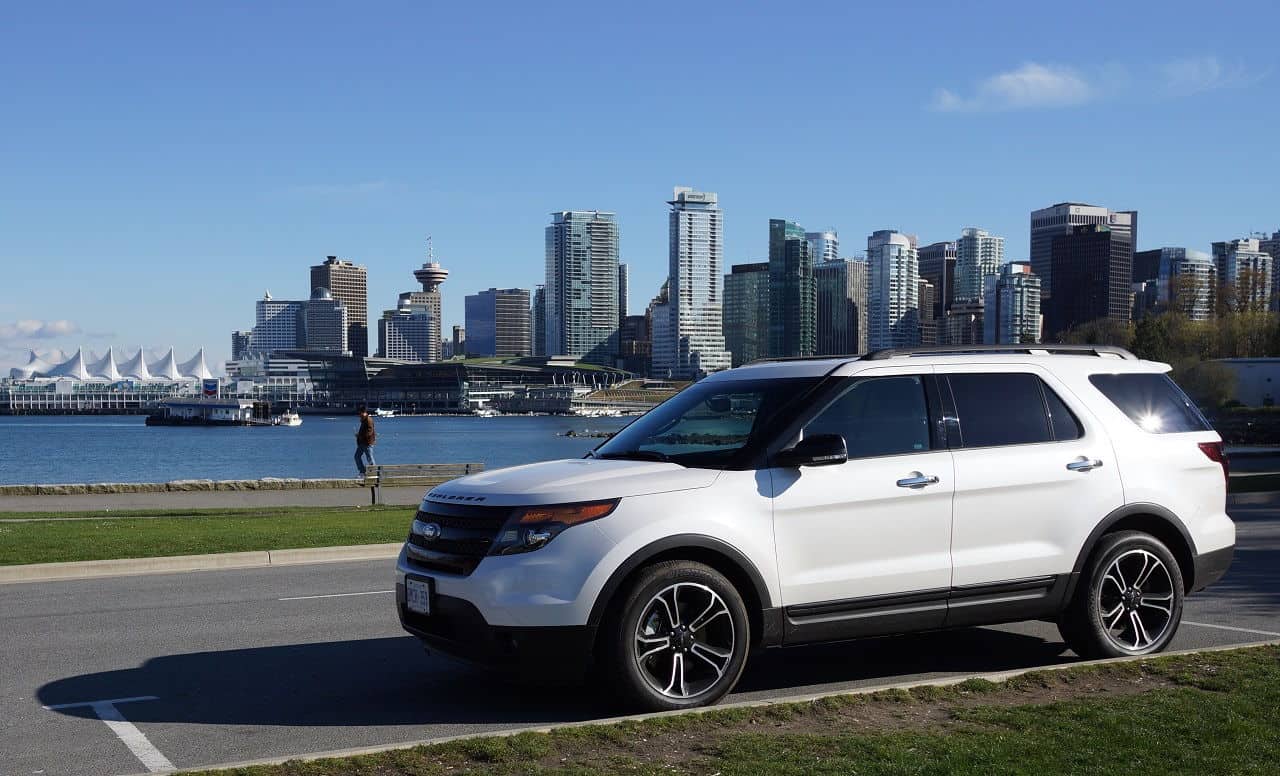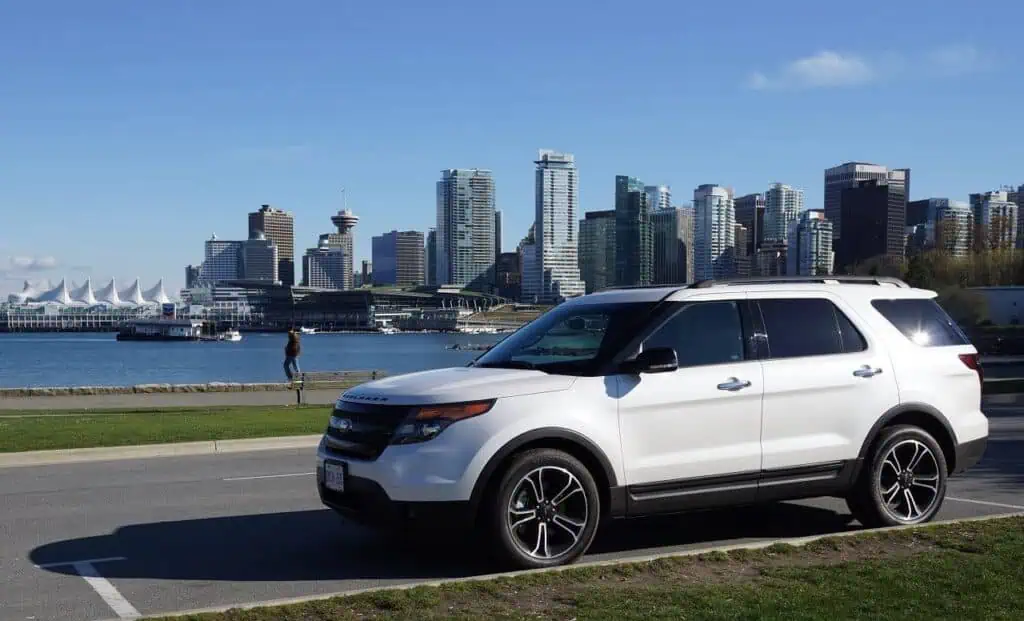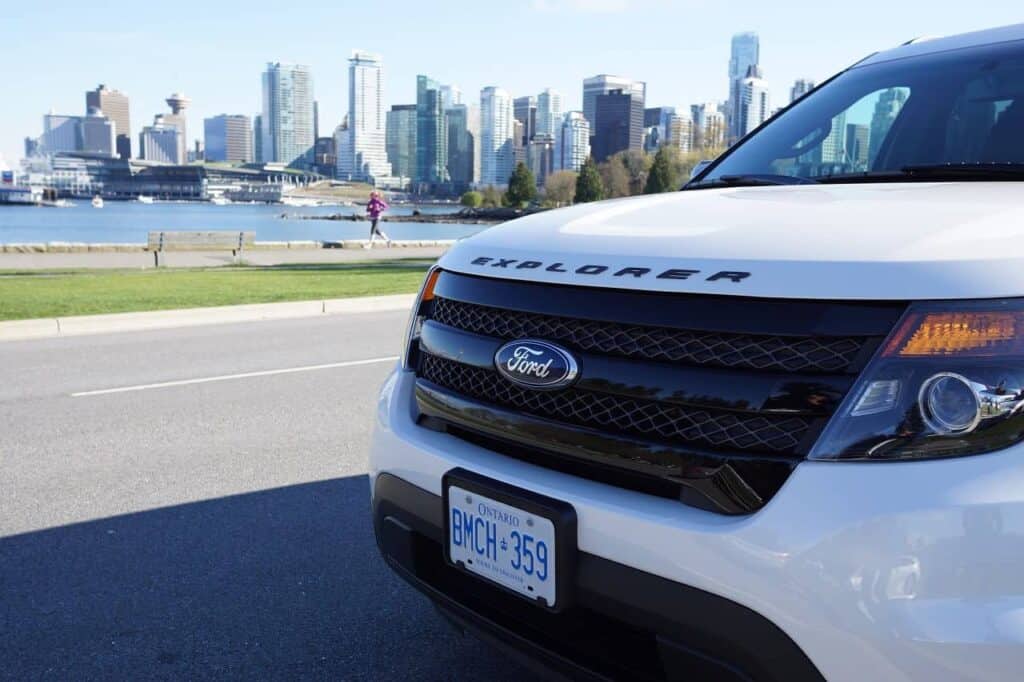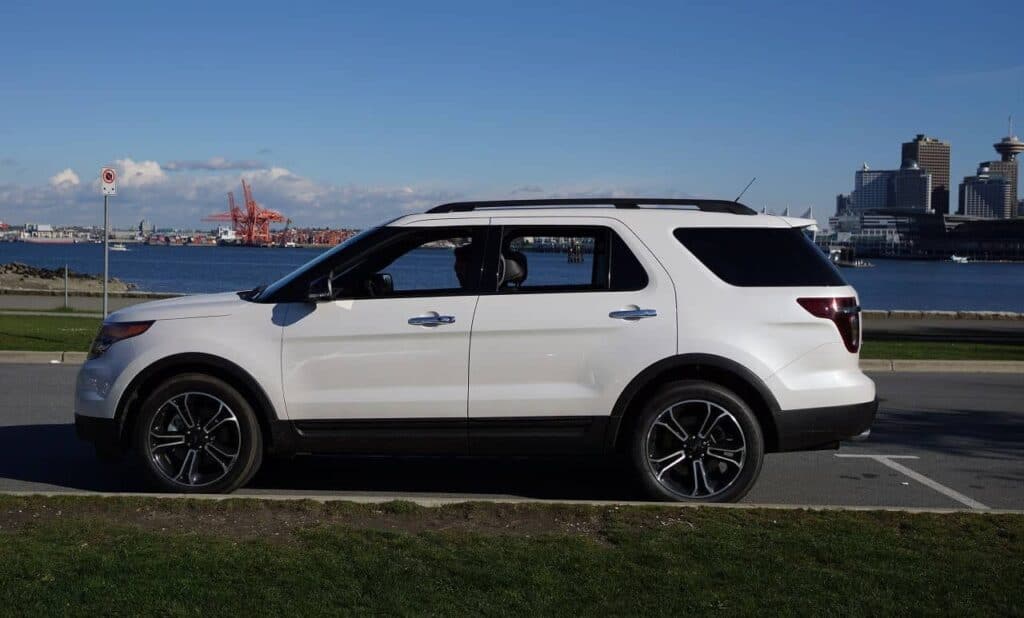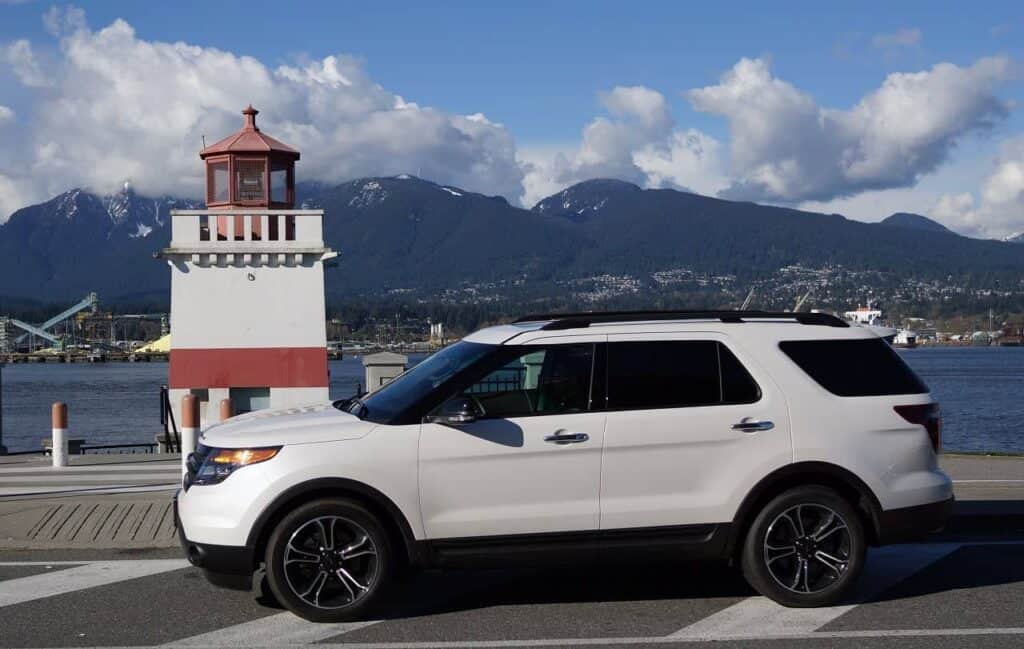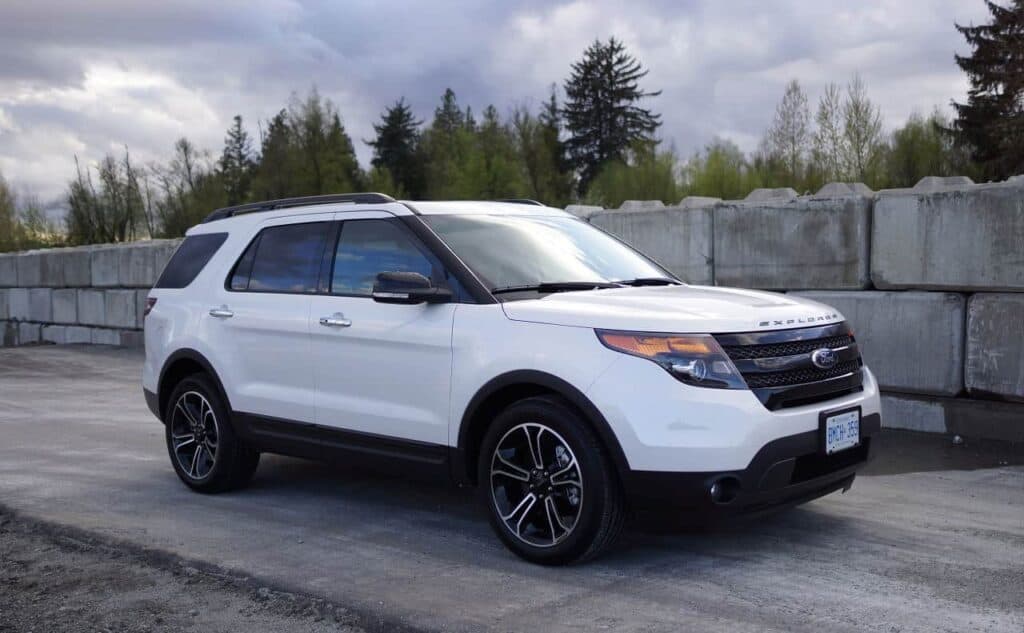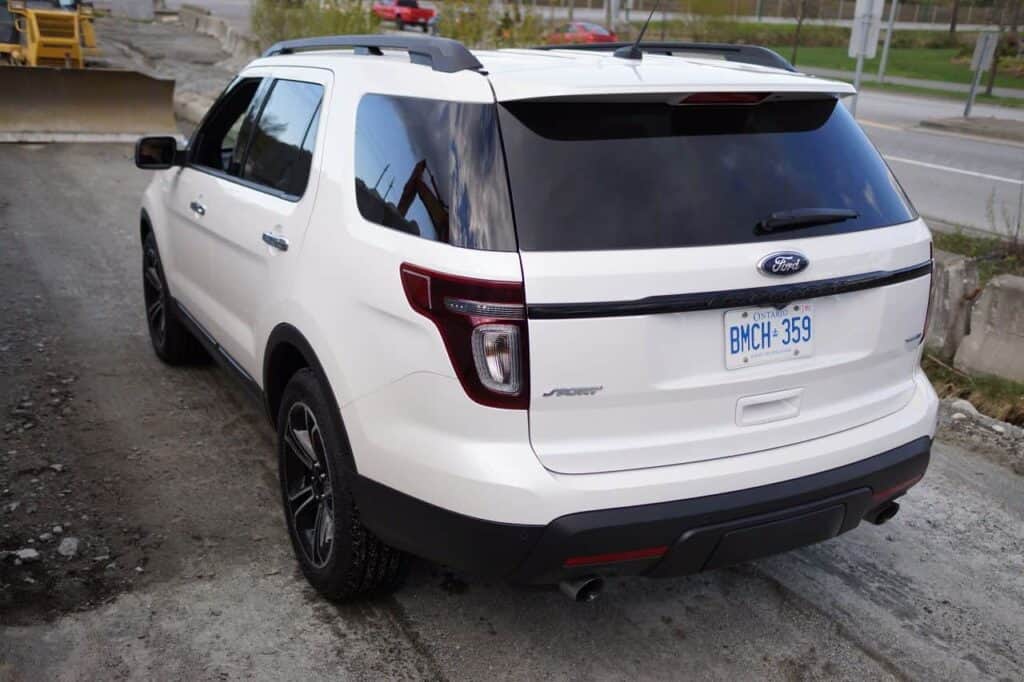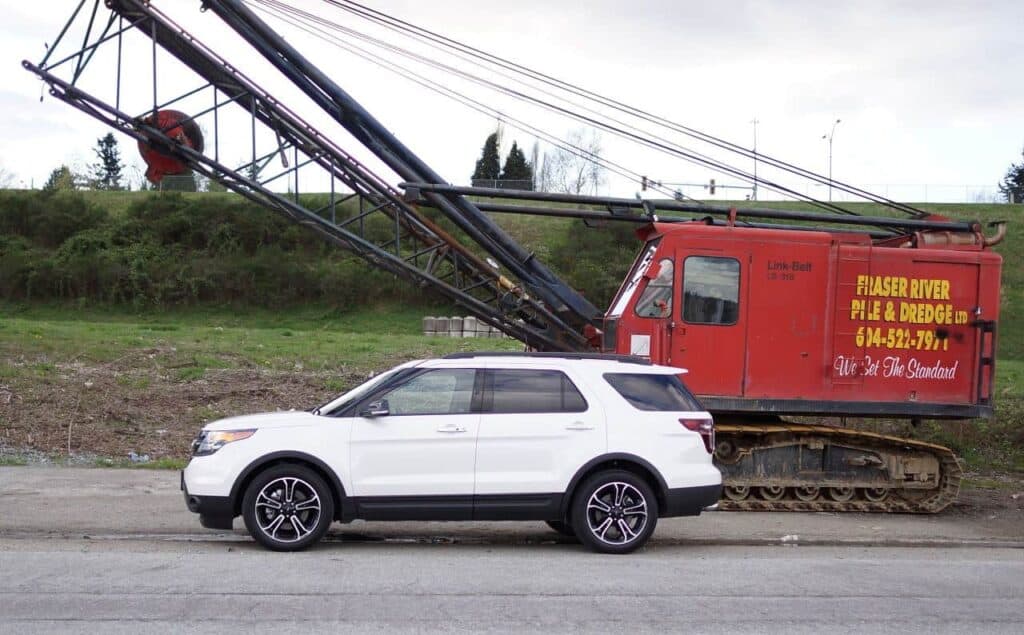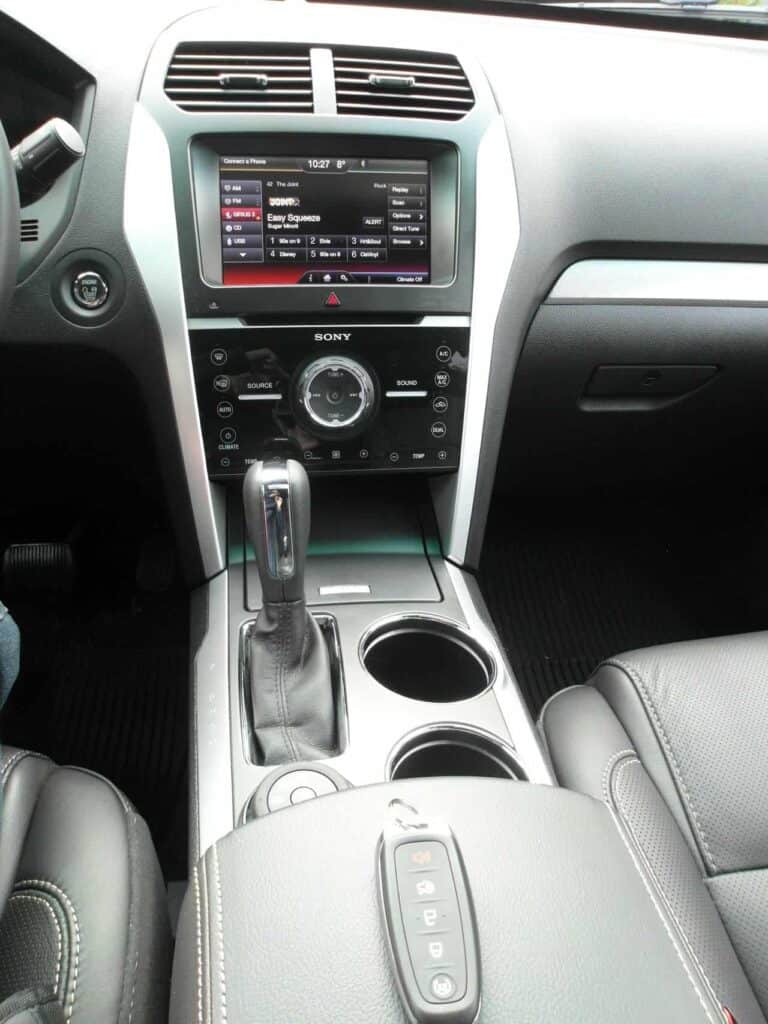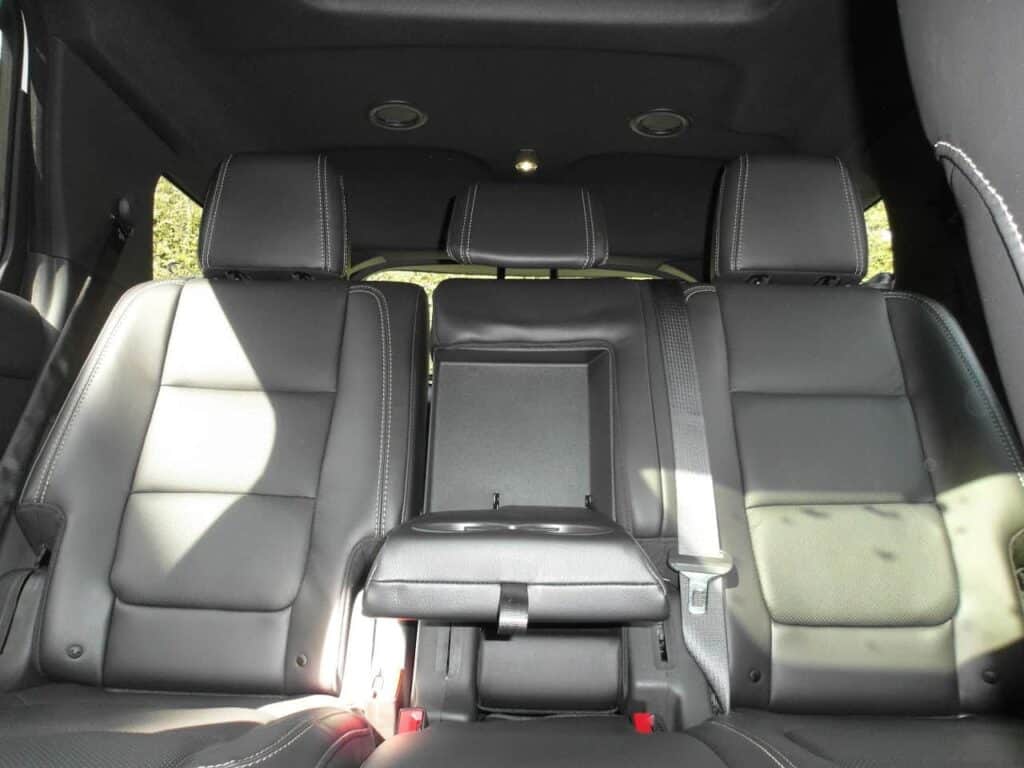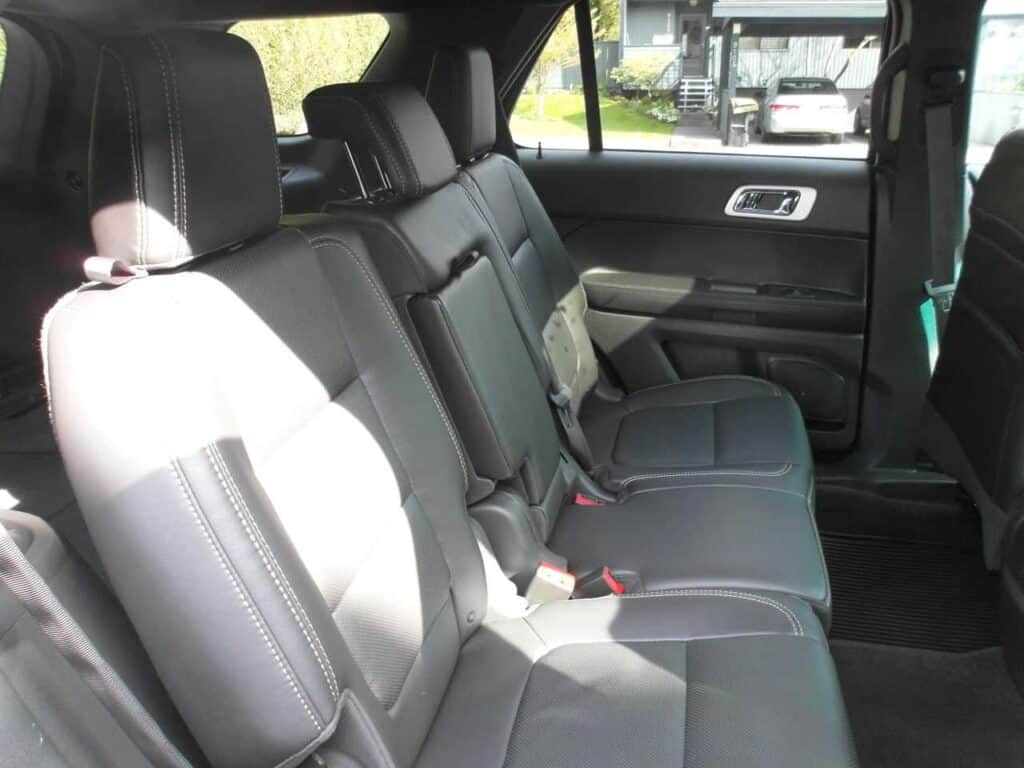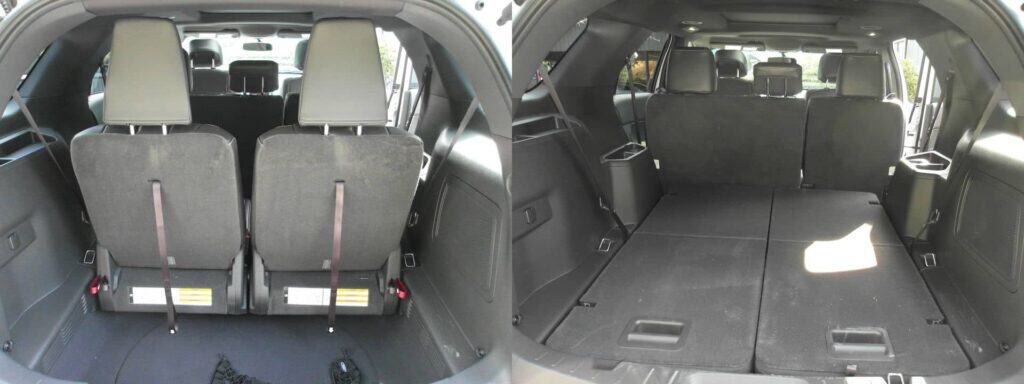When it comes to automobiles and the word “sport” is mentioned, most people automatically think Sports Cars and not an SUV, even though SUV stands for “Sport Utility Vehicle”. The vehicle we reviewed this week is an SUV with a heavier emphasis on the “Sport” – the 2013 Ford Explorer Sport. We had the opportunity to review the Explorer Sport for a week and below are our thoughts on the vehicle and some of the technical info you’d need before deciding whether this is the right SUV for you.
The 5th generation Ford Explorer was introduced as a 2011 model, and was the first generation of Explorers to use a uni-body construction, instead of the traditional body-on-frame found on older SUV’s. The chassis is shared with the Ford Flex and Taurus, which we reviewed last year.
In Canada, the Ford Explorer starts at $29,999, the vehicle we had for our review is priced at $53,539 before PDI and taxes. The Explorer Sport we had consisted of $5,230 worth of optional equipment like dual panel moon roof ($1,750), adaptive cruise control/collision warning ($1,500), tow package ($500), voice activated navigation ($700), and a few other things.
Performance
The 2013 Ford Explorer Sport is the top of the line model and therefore, it gets the most powerful engine available, the twin-turbocharged 3.5 liter EcoBoost V6. The engine produces 365 horsepower at 5,500 rpm and 350 pound-feet of torque at 3,500 rpm. Power is sent to all four wheels, intelligent 4WD system with Terrain Management System, via a 6-speed automatic transmission with steering wheel mounted paddle shifters.
The Explorer Sport is a heavy vehicle but the EcoBoost engine helps it do the 0 – 60 mph (96.5 km/h) in a sports car like 5.9 seconds; see, I told you this SUV emphasized “Sport”. Driving around normally, the Sport feels pretty tame but step hard on the gas pedal and let the turbochargers wind up, and this thing really moves; pretty impressive performance from a big heavy vehicle that can seat 7 passengers in comfort and tow 2,057 kg (5,000 pounds).
According to Ford, the Explorer Sport should consume 13.2 L/100 km (17.82 US mpg) in the city, 8.8 L/100 km (26.73 mpg) on the highway, and 11.2 L/100 km (21 mpg) combined. We drove the Explorer for seven days and it was mostly city driving; we were able to average 14.8 L/100 km (15.89 mpg), which is not too bad considering we don’t drive like the people testing these cars for EPA mileage.
Driving Dynamics
Driving around in the city, the Explorer Sport feels very comfortable; it does have a tighter suspension and a firmer ride than the regular Explorer but that’s why they call it “Sport”. I really like the way it handles, not as much body roll as you’d expect in a large SUV.
Unlike the previous generation Explorers, the 5th generation Explorer’s uni-body construction helps make the ride more comfortable, although giving up some off-road ability. But since most of the buyers will never take this SUV off-roading, and MAYBE drive a bit on non-paved roads, it makes sense to use uni-body construction, which also helps with the fuel economy.
With that being said, the Explorer Sport is not a sports car and does drive like a big car, but it’s pretty easy driving in the city and get in and out of crowded parking lots. On the highway, it cruises pretty quietly and when you need to pass someone, there’s plenty of power, just step on the gas pedal and it responds quickly.
Design/Styling
The 2013 Ford Explorer Sport is a pretty good looking vehicle; it has a muscular stance and has pretty good road presence. With the “Sport” package there are a few differences between the regular models and this one. At the front, the three horizontal bars have a black high gloss finish (instead of chrome) on low gloss mesh behind them. The chrome bar on the tailgate also gets the black high gloss treatment. The headlights and taillights also get black tint, and finishing off the sporty look are 20” machined aluminum black wheels with polished edges and the word “Sport” engraved.
A few people commented on how the Explorer Sport reminded them of a Range Rover, I don’t really see the resemblance but it’s a good vehicle to be compared to.
Interior
The interior on the 2013 Explorer Sport, like most other new Fords and new vehicles in general, is very well designed with a minimalist look. The dashboard is covered with soft-touch material and the center console comes with only one traditional knob, every other “button” is touch-sensitive. The driver has four options for changing settings like entertainment, climate, navigation etc. The driver can change most of the setting with either the steering wheel mounted buttons, the large touchscreen, the touch sensitive panel below the screen, or using voice command (more on that later).
The interior is very comfortable with bolstered leather seats for the front passengers that are heated and cooled; the driver gets a 10-way power seat with lumbar and the passenger gets 6-way power seat with lumbar. The 2nd row seats three people and the 3rd row has seats for two, there is enough space for shorter passengers but taller people (6’+) might find it a bit cramped. The 3rd row seats fold into the floor quite easily (if not equipped with auto-folding seats) with the pulling of a few straps and following directions outlined on the seats (click on the image above). Once the seats are folded, there is lots of room to put your stuff in.
Technology
This top of the line Explorer Sport is packed with lots of technology. One of the main features of new Ford vehicles is the SYNC with MyFord Touch system, which is pretty impressive and can perform a lot of functions without the driver having to take their hands off of the steering wheel and keeping eyes on the road. I was going to list all the features in this post but decided to write a separate post on just the Ford SYNC with MyFord Touch system <- click it.
Other technologies in the Explorer Sport include adaptive cruise control with collision warning, the adaptive cruise control is pretty cool, it works like a normal cruise control but the vehicle will brake automatically if the car in front slows down, it brakes quite hard if needed; I tested and it worked like a charm. The collision warning will flash LED lights on the dashboard and sound an alarm, if the system detects you’re about to rear-end someone.
There is a blind spot monitoring system, a light on the side mirror that turns on when someone’s in your blind spot; rear camera with parking sensors that alert you when a car or a person is coming from the side. The Explorer could benefit from a front parking sensor, I found it hard to judge the front when I was pulling into parking spots; the Fusion has this feature which it doesn’t really need as much as the Explorer.
Overall Impressions
The 2013 Ford Explorer Sport is quite a good looking SUV and it does deserve the “Sport” badge because with the added aesthetic touches, it looks quite sporty. It has a powerful engine and can tow up to 5,000 pounds; the EcoBoost engine produces V8-like power with V6 fuel economy. The interior is very quiet and comfortable, and the ride is car-like. The Explorer Sport is like a modern-day hot-rod that can go off-roading and carry 7 passengers. And last but not least, it’s full of technology for tech savvy people that can’t seem to put down their smart phones or tablets.
For more information, check out Ford’s website.
